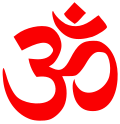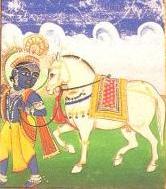This article's lead section contains information that is not included elsewhere in the article. If this information is appropriate for the lead, it should also be included in the article's body. Relevant discussion may be found on the talk page.(May 2024) ( Learn how and when to remove this message ) |
| Part of a series on |
| Eschatology |
|---|
|
Figures and items
|
Hindu eschatology is linked to the figure of Kalki, or the tenth and last avatar of Vishnu before the age draws to a close, and Harihara simultaneously dissolves and regenerates the universe.
Contents
- The Four Yugas
- Early references
- Kali Yuga
- Kalki
- Kalagnanam
- Pralaya
- In daily life
- See also
- Notes
- References
- External links
The current period is believed by Hindus to be the Kali Yuga, the last of four Yuga that make up the current age. It started when Krishna left the Earth in 3102 BC or 5125 years from 2025. [a] Each period has seen a progressive decline in morality, to the point that in Kali Yuga quarrel and hypocrisy are norm. In Hinduism, time is cyclic, consisting of cycles or "kalpas". Each kalpa lasts for 4.32 billion years and is followed by a pralaya (dissolution) of equal length, which together make a period of one full day and night of Brahma's 100 (360-day) year lifespan, who lives for 311,040,000,000,000 (311 trillion, 40 billion) such years. The cycle of birth, growth, decay, and renewal at the individual level finds its echo in the cosmic order, yet is affected by the vagaries of divine intervention in Vaishnavism. Some Shaivites hold the view that he is incessantly destroying and creating the world.
| Part of a series on | |
| Hindu philosophy | |
|---|---|
 | |
| Orthodox | |
| Heterodox | |
Teachers (Acharyas) | |
| |


